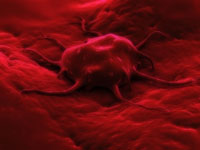Cancer Some Referred To Specialists Laters
A recent study, published Online First in The Lancet Oncology, reveals that although 77% of cancer patients who have strange symptoms are usually sent to the hospital after 1 or 2 consultations, non-white patients, young people, women, and people with uncommon cancers often see their doctors 2 to 3 times before being referred to a cancer specialist.
The study also shows the large differences in the speed of doctors in England when it comes to diagnosing different types of cancer. This is due to the fact that patients with symptoms showing possible multiple melanoma, lung, and pancreatic cancer need many more consultations to determine what is really going on compared to patients with common cancers, such as melanoma, testicular, and breast cancer.
Georgios Lyratzopoulos, lead author of the study, from Cambridge University in the UK commented:
"These findings highlight limitations in current scientific knowledge. Medical research in recent decades has prioritized improving cancer treatments, but knowledge about the 'symptom signature' of common cancers and practical solutions on how best to diagnose them is still emerging. We hope our research can help to generate support for further research into the diagnosis of those cancers where the challenge of section is greatest. This will improve the patients experience of cancer diagnosis and can also lead to earlier and more effective treatment."
Researchers explain that the number of visits a patient has with their doctor before being referred to the hospital can greatly impact the patient experience.
To determine their findings, the researchers collected data from over 41,000 patients who had 24 different types of cancer and who were being treated at 158 different hospitals in England. They analyzed the patients cancer type, sex, age, ethnicity, and socioeconomic status, as well as how many times patients went to their physician with symptoms before their doctor gave them a hospital referral.
The authors determined that the patients who had Hodgkin's lymphoma, multiple myeloma, stomach cancer, lung cancer, ovarian cancer, colon cancer, and pancreatic cancer were much more likely to have seen their doctors more than 3 times before their doctors referred them to the hospital. According to the authors, this may be because of the various symptoms in certain patients, which makes it harder for the patients' doctors to diagnose immediately. On the other hand, cancers which are seen often and have easy-to-diagnose symptoms, such as an obvious lump, probably receive referrals faster, due to the fact that it is more known what is causing these symptoms.
Researchers believe that patients who are from ethnic minority groups and younger patients probably see there doctor more times than others before being referred to the hospital because of communication problems, or the fact that doctors may not expect cancer in someone young.
The authors say there needs to more efficient use of new technologies in order to find symptoms earlier, and therefore start treatment sooner.
In the article's accompanying comment, by Martin Gulliford from King's College London, UK, he states:
"These findings raise several questions.. that deserve to be tested prospectively in future research.. Do modes of cancer presentation vary systematically between different groups of patients? Are GP's more reluctant to refer young or non-white patients for investigation of possible cancer? Are participants in these groups less willing to accept a referral to investigate possible cancer?"




